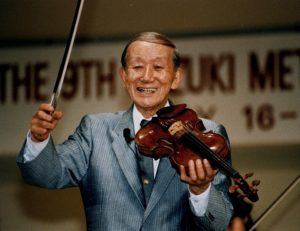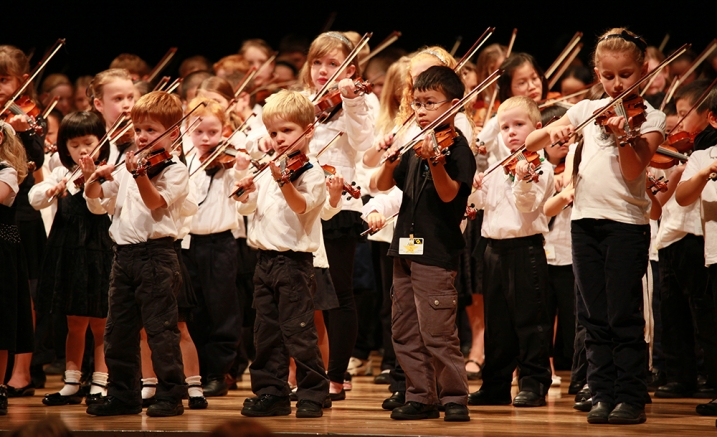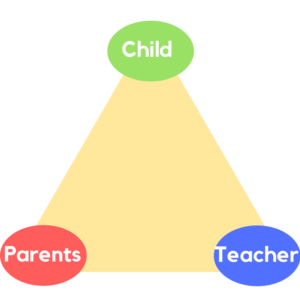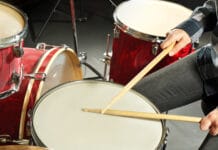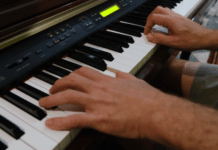Have you ever heard of the Suzuki Method? Even if you are not a musician, almost every person out there has heard the word, Suzuki, at least once. People also associate it with violin and small children.
So what is it really? Well, it’s a study method that was originally designed for the violin, but eventually branched out to other instruments such as the viola, cello, bass, piano, flute, harp, recorder, organ, and voice.

Who was Suzuki?
Shinichi Suzuki was born in Nagoya Japan, where he grew up with his 11 siblings. His father owned a violin factory, so he has always had a close relationship with the instrument, even though he never played it as a boy – in fact, he thought it was only a toy.
When he was 17 years old, he recalls that he heard Schubert’s Ave Maria played by the violinist Mischa Elman and that’s when he discovered that the violin wasn’t just a toy, but it could, in fact, produce beautiful sounds.
He then took one of the violins from his father’s factory and began to imitate the sounds. Soon after he began taking violin classes in Tokyo, and when he was 22 he moved to Germany to study with Karl Klingler. When he moved back to Japan, he began to teach and play string quartets with his siblings.
He had always loved children and had a particular interest in teaching them. He thought that children could learn to play an instrument the same way they learned to speak. This meant that they could learn when they were very young and hearing it all around them. He believed that any child could learn an instrument when taught by loving parents and teachers.
These thoughts were very different and new at the time. People believed that to play an instrument the child should be 10 or 11. They also believed that the gift of music was a talent only a few had, meaning that not every child had the ability to play an instrument, let alone at the age of 4. However, Suzuki surprised them all when his young students began to perform so well.
Teaching from the heart.
Shinichi believed that through a loving and well-rounded education of music, children could become better people. He knew that with the right environment and community created by teachers and parents, a child could grow up to have good and peaceful hearts that could bring peace and understanding to the world.
“Teaching music is not my main purpose. I want to make good citizens. If children hear fine music from the day of their birth and learn to play it, they develop sensitivity, discipline, and endurance. They get a beautiful heart.”
– Shinichi Suzuki
What is the Suzuki Method?
The Suzuki Method (also known as the Talent Method) is a reflection of the Mother Tongue Method.
The Mother Tongue Method consists in the process of a child to learn the language spoken in his home. In the chart below you can see how both methods relate:
Listen and observe
MTM: the child is surrounded constantly by the words of the language spoken by his parents.
SM: The child is constantly surrounded by music both in his home and community.
Imitate
MTM: The child begins to imitate the sounds that are constantly being said. The child might begin by speaking words incorrectly, trying to make them sound like the original one. An example of this could be the word “mama”, instead of “mother”.
SM: The child tries to produce in the instrument the sounds that he hears. This way, they become comfortable with the instrument by producing different types of sounds. They might not be perfect, but the child is getting familiarized with the instrument.
Praise and Repetition
MTM: When the child begins to speak, the parents encourage the child to continue trying and praise him for his efforts. This allows the child to continue speaking and learning with more enthusiasm.
SM: As the child progresses with his instrument, the parents encourage the child to continue practicing and praise his improvement.
Mastery
MTM: The child has learned to speak correctly with more complex sentences. He recognizes almost every word and has no trouble getting his point across. He can maintain a conversation.
SM: The child is familiarized with the instrument and feels comfortable and confident playing it. The sound produced is of quality.
Reading
MTM: The child now begins to read. This attempt happens years after he has started learning to speak. Because the child knows the meaning of the words, it is easier for him to learn to read.
SM: The child is familiarized with the different sounds and the relation between them and the positions in the instrument. It is time now to learn to read music, associating the sounds with the scripture in the paper.
From theory to practice
The way the method is put into practice involves three parties: the parents, the teachers, and of course, the child.
The Parents
The parents are in charge of creating and promoting the appropriate environment for the child to learn the best. They will play recordings of music so that the child is in a constant immersion of sound, take him to lessons and help him practice at home.
The Teachers
The teachers provide the lesson, guides the student towards mastery, and provides a model to imitate. The teacher also teaches the parents so that they can be able to best assist the child when he practices at home. The teacher is also in charge of organizing group lessons to allow the children to listen to each other and to foster a culture of fellowship, tolerance, and friendship.
The Child
The child listens and practices. It is the child’s goal to achieve independence so he can study on his own, without the assistance of his parents.
A community of kind and loving individuals
Suzuki’s intention was to create a musical community of children around the world, who would become better adults by growing with a kinder and loving heart, a sensitivity that is always developed with the appreciation of music, among other practices.
It is always a good recommendation to study under the Suzuki Method in the early years. It is a safe environment where the child can grow and be stimulated in a respectful and loving community, regardless of whether they continue on with their instrument in later years.
“Our aim needs to be the nurturing of children. The moment we rigidly convince ourselves, “Education is what we’re after,” we warp a child’s development. -1- First foster the heart, then help the child acquire ability. This is indeed nature’s proper way.”
– Shinichi Suzuki
Table of Contents

